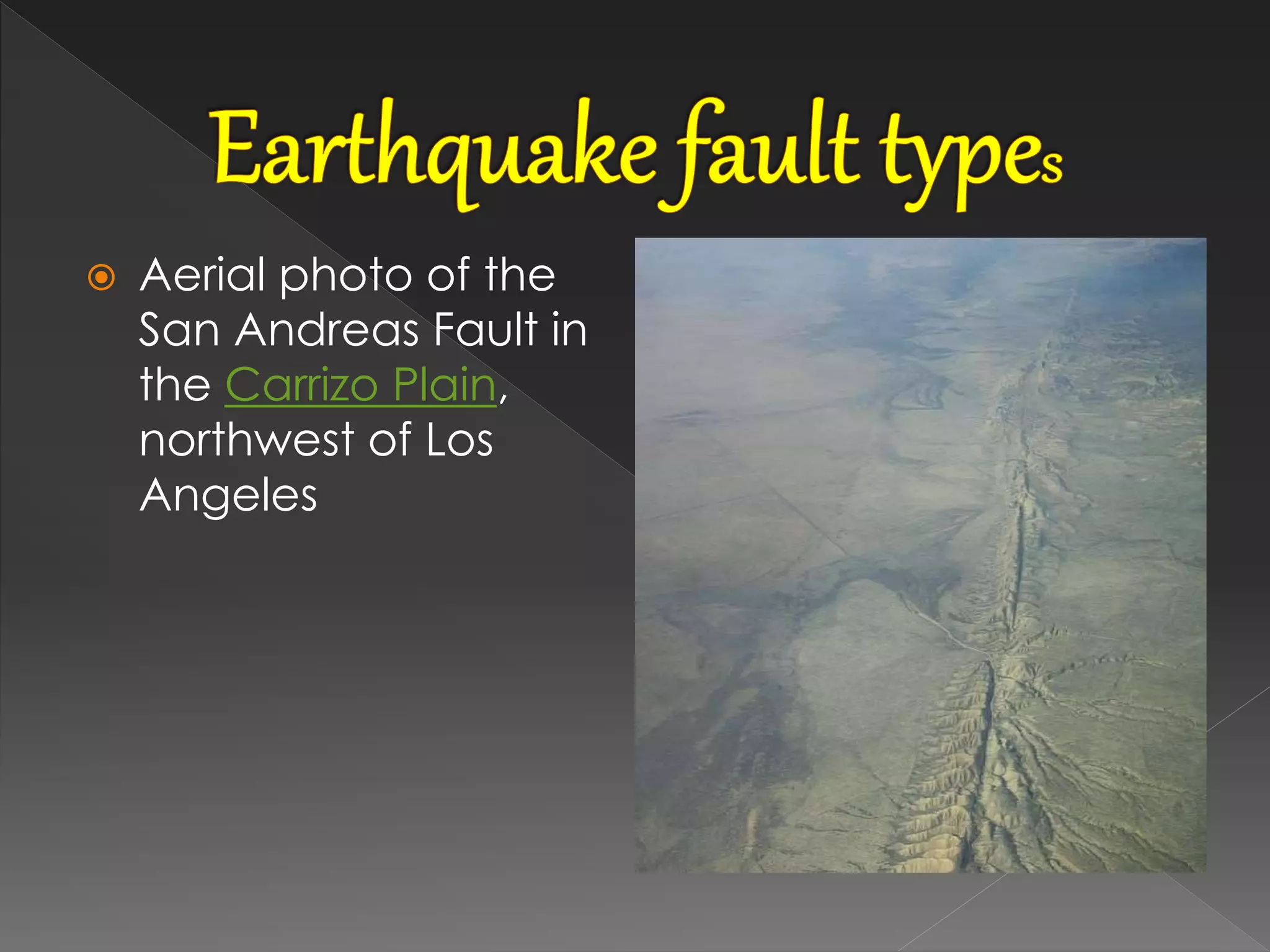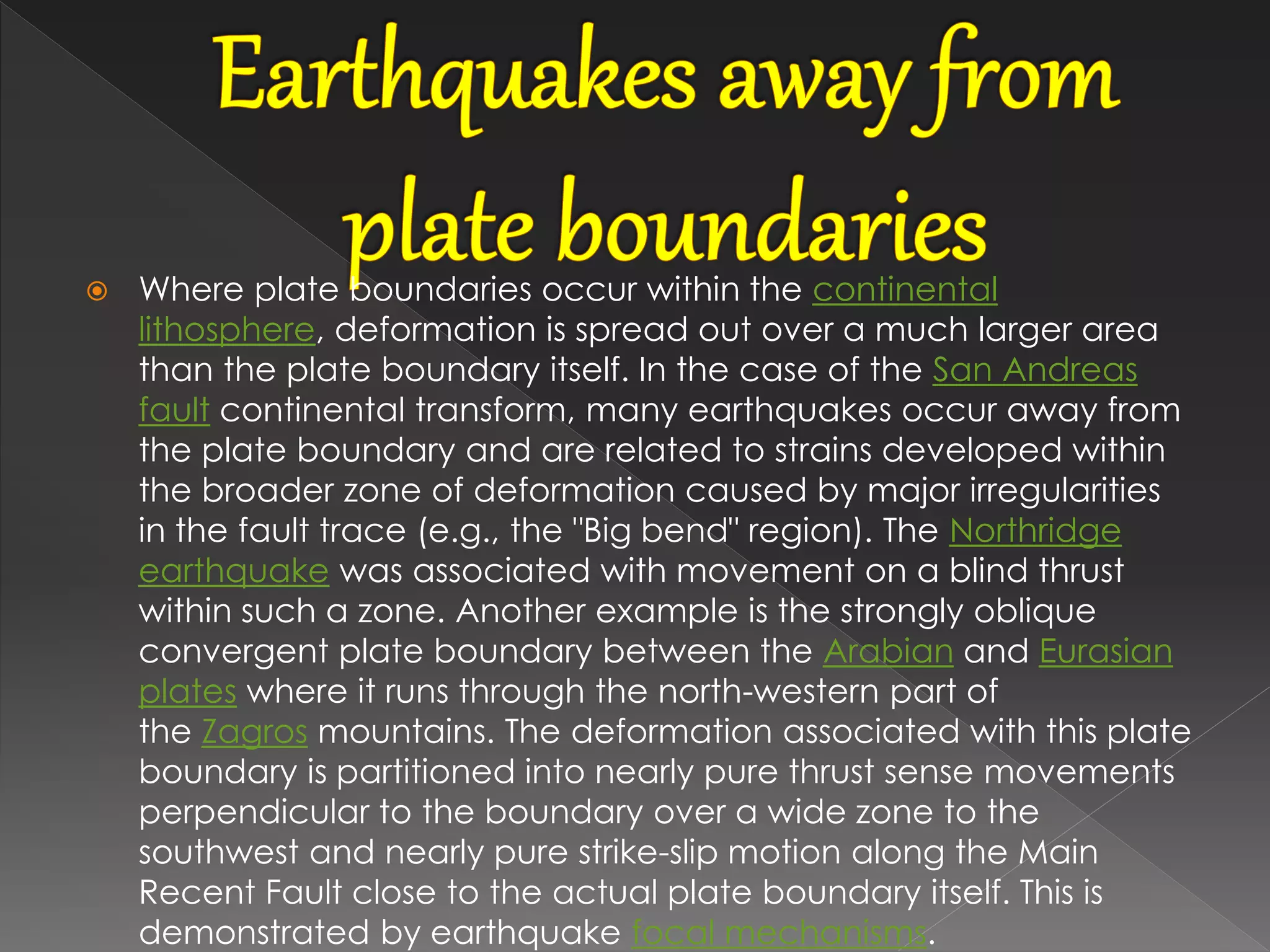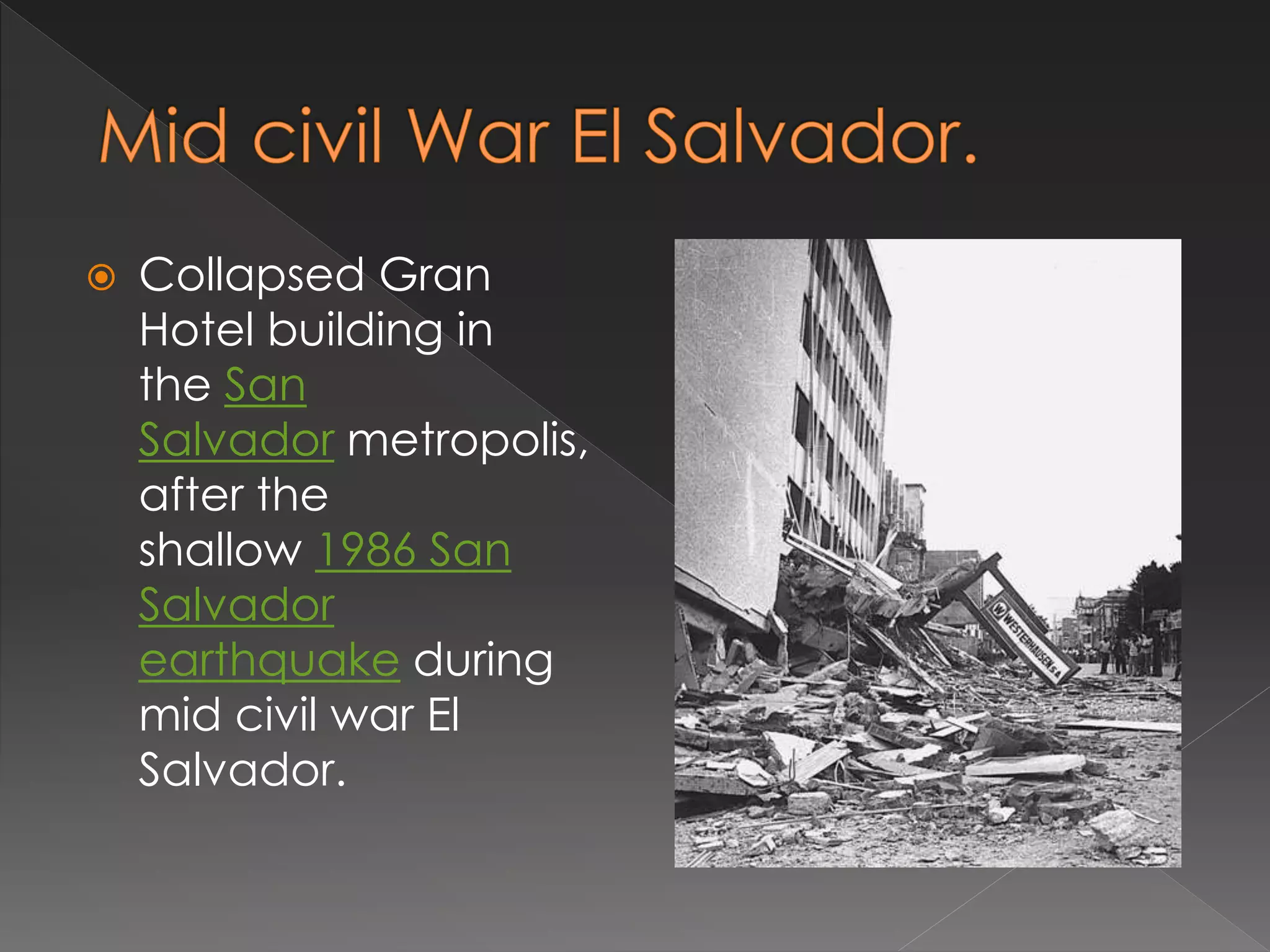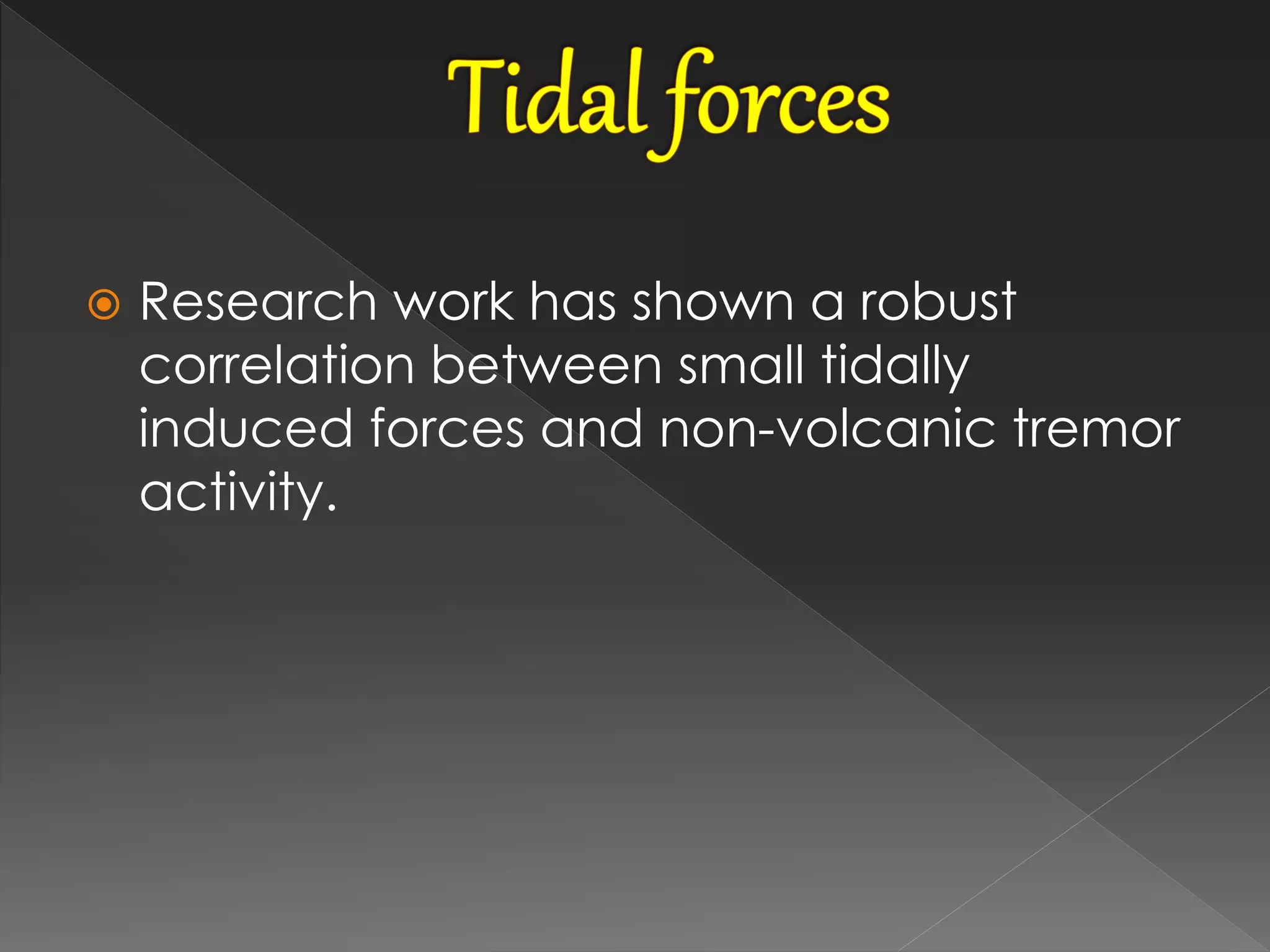1) An earthquake occurs due to a sudden release of energy in the Earth's crust that creates seismic waves.
2) Earthquakes are measured using seismometers and reported using scales like the moment magnitude and Richter magnitude scales.
3) Most earthquakes are caused by movements along faults in the Earth's crust due to a build up of elastic strain energy and occur in areas with sufficient stored elastic strain energy, like near tectonic plate boundaries.






![ Most fault surfaces do have such asperities and this
leads to a form of stick-slip behaviour. Once the fault
has locked, continued relative motion between the
plates leads to increasing stress and therefore, stored
strain energy in the volume around the fault surface.
This continues until the stress has risen sufficiently to
break through the asperity, suddenly allowing sliding
over the locked portion of the fault, releasing
the stored energy.[2] This energy is released as a
combination of radiated elastic strain seismic waves,
frictional heating of the fault surface, and cracking of
the rock, thus causing an earthquake. This process of
gradual build-up of strain and stress punctuated by
occasional sudden earthquake failure is referred to
as the elastic-rebound theory](https://image.slidesharecdn.com/naturaldisaster-earthquaketsunami-150826134930-lva1-app6892/75/Natural-disaster-earthquake-7-2048.jpg)










![ The majority of tectonic earthquakes originate at the ring
of fire in depths not exceeding tens of kilometres.
Earthquakes occurring at a depth of less than 70 km are
classified as 'shallow-focus' earthquakes, while those with a
focal-depth between 70 and 300 km are commonly
termed 'mid-focus' or 'intermediate-depth' earthquakes.
In subduction zones, where older and colder oceanic
crust descends beneath another tectonic plate, deep-
focus earthquakes may occur at much greater depths
(ranging from 300 up to 700 kilometres).[16]These seismically
active areas of subduction are known as Wadati-Benioff
zones. Deep-focus earthquakes occur at a depth where
the sub ducted lithosphere should no longer be brittle, due
to the high temperature and pressure. A possible
mechanism for the generation of deep-focus earthquakes
is faulting caused by olivine undergoing a phase
transition into a spinel structure](https://image.slidesharecdn.com/naturaldisaster-earthquaketsunami-150826134930-lva1-app6892/75/Natural-disaster-earthquake-18-2048.jpg)




![ Earthquake swarms are sequences of
earthquakes striking in a specific area within a
short period of time. They are different from
earthquakes followed by a series of
aftershocks by the fact that no single
earthquake in the sequence is obviously the
main shock, therefore none have notable
higher magnitudes than the other. An example
of an earthquake swarm is the 2004 activity
at Yellowstone National Park.[27] In August 2012,
a swarm of earthquakes shook Southern
California's Imperial Valley, showing the most
recorded activity in the area since the 1970s.](https://image.slidesharecdn.com/naturaldisaster-earthquaketsunami-150826134930-lva1-app6892/75/Natural-disaster-earthquake-23-2048.jpg)


